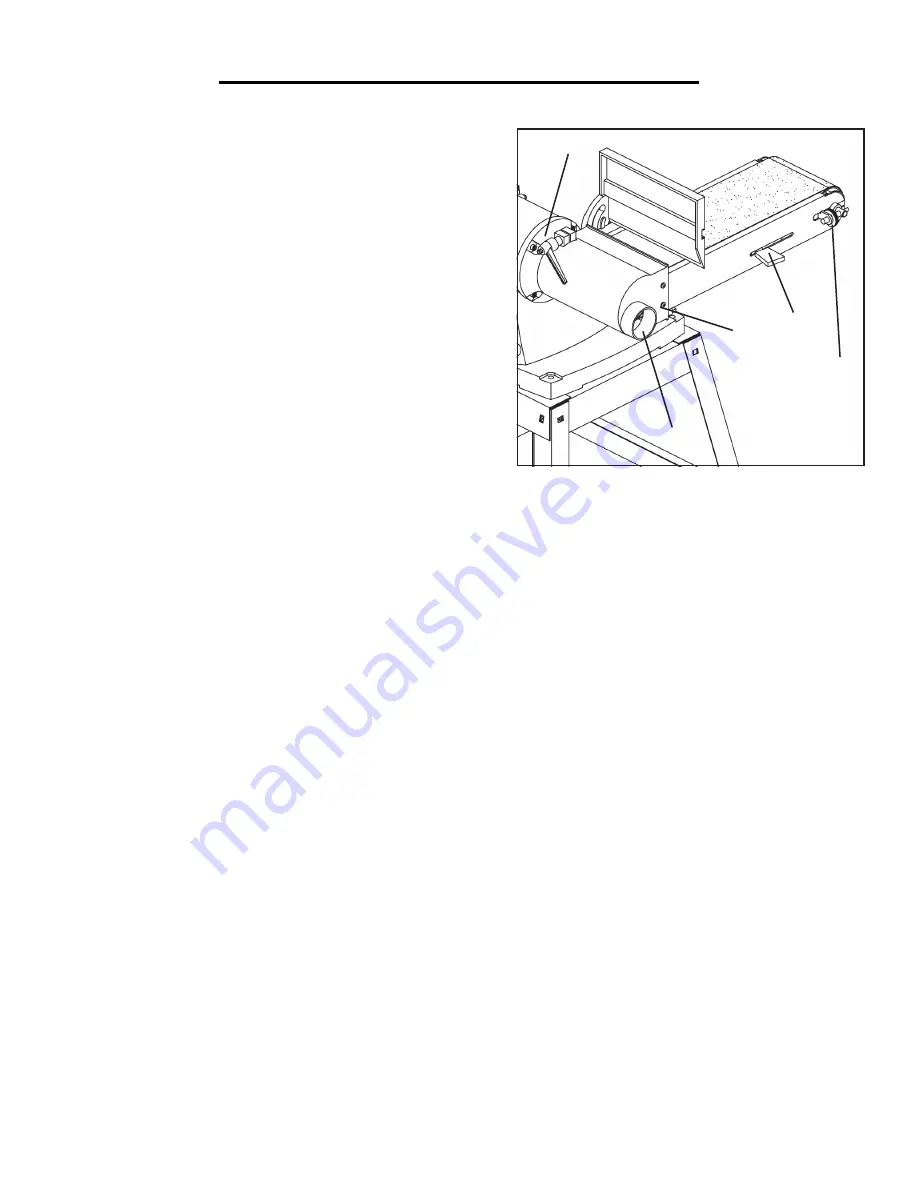
ADJUSTMENTS
ADJUSTING THE SANDING BELT TRACKING
1. Turn on the power switch. If the belt looks like it is going
to slide off either drum, the belt tracking needs to be adjusted.
2. Turn the belt tracking adjustment knob (Fig. H -1) until the
belt rides on the center of the passive drum and drive drum.
ADJUST THE BELT ASSEMBLY POSITION
CAUTION: Never make adjustments to the belt sander with-
out first unplugging the power cord from the electrical outlet.
The sanding belt assembly can be adjusted from the horizontal
to the vertical position. To adjust:
1. Loosen the lock handle (Fig. H - 4) that is threaded into the
pivot bracket.
2. Tilt the belt assembly to the desired position (from horizon-
tal to vertical). Secure the belt assembly in position by tighten-
ing the lock handle (Fig. 8 - 4).
1
2
3
4
5
Fig. H
REPLACING ABRASIVE BELT
1. The sanding belt should be regularly replaced when worn or torn. Start by removing the belt dust chute (Fig. H -
5) with the two pan head screws and washers (Fig. H - 3).
2. Release the belt tension by pushing the tension lever (Fig. H - 2) towards the passive drum. Slide old belt off the
drive and passive drums.
3. Slide the new belt over the drive and passive drums; center the belt on drums.
4. Push the tension lever towards the drive drum to tension the belt.
5. Rotate the belt by hand to check the tracking. The belt should ride centered on the drive and passive drums.
Adjust the thumb nut (Fig. H - 1) as needed to center the belt on the drums (see the “Adjusting the Sanding Belt
Tracking” section above).
6. Mount the belt dust chute using pan head screws and washers.
12




































